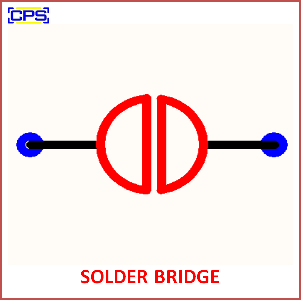A Solder Bridge is an unintended or deliberate electrical connection created between two or more adjacent conductive traces or pads on a circuit board using solder. While typically considered a fault in PCB assembly, solder bridges can also be intentionally used as part of circuit design for shorting specific connections.

Key Features of a Solder Bridge
- Unintentional Solder Bridge:
- Occurs due to excessive solder application, poor soldering technique, or insufficient spacing between conductive traces or pads.
- Can cause short circuits, leading to malfunction or damage to the circuit.
- Intentional Solder Bridge:
- Used in PCB design for programming, configuration, or testing purposes, allowing easy connection or disconnection of circuits by soldering or desoldering the bridge.
Applications of Intentional Solder Bridges:
- Circuit Configuration:
- Allows selection between different modes or features in a circuit.
- Programming and Debugging:
- Enables temporary connections during device programming or testing.
- Cost Reduction:
- Eliminates the need for additional components like jumpers or switches in specific cases.
Advantages:
- Intentional Bridges:
- Cost-effective and simple to implement for configuration and testing.
- Unintentional Bridges:
- Can serve as a diagnostic marker for manufacturing defects.
Disadvantages:
- Unintentional solder bridges can lead to:
- Short circuits and potential damage to components.
- Increased troubleshooting and repair time.
- Degraded reliability in the final product.
Prevention of Unintentional Solder Bridges:
- PCB Design:
- Ensure proper spacing between conductive traces and pads.
- Soldering Technique:
- Use the correct amount of solder and a steady hand or automated system.
- Inspection:
- Perform visual or automated inspection (e.g., AOI) after soldering.
